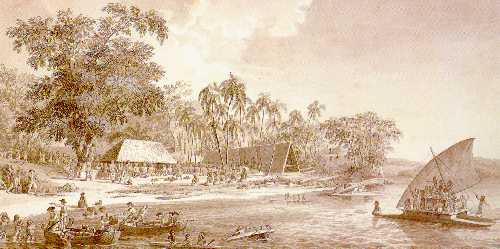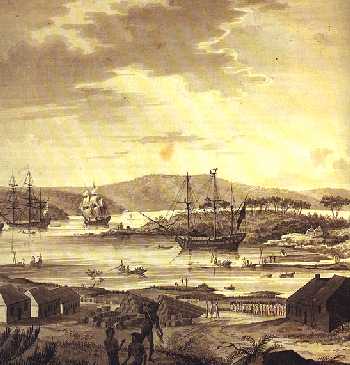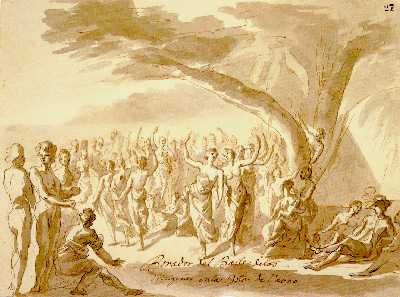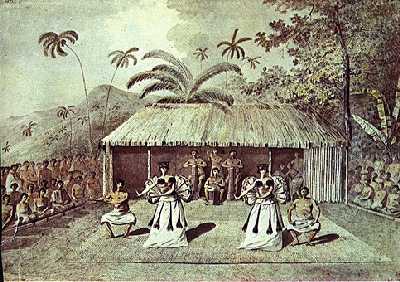
2. Considerations on the gathering of data
The first musical ethnographers realized that a certain "mediation" and contextual conditioning are implied in the data collection process and that situations of risk affect the appraisal of facts, stories directly heard or documentary sources. This drove these scholars in many instances to compare opinions, descriptions and documents, a fact which is often confirmed in their work (Ixtlilxochitl 1985: 85) (11). If, however, in the reconstruction of the past, the comparison of oral and written sources does not rid the historian of the need to create a personal and deliberate discourse to fill in the gaps left by the collected data (Levi Strauss 1988: 169), the observation of the present creates even more gaps.
During this period, the speculations of the researchers on the questions concerning the process of data collection concentrate heavily on their own inadequacies as regards fieldwork. Among these we can mention a poor knowledge of the language, the short time dedicated to data gathering and the lack of a sufficient degree of trust in local populations.
To analyze a text, Umberto Eco suggests that the "intentio operis", may include also the author's intention to incite the potential reader to develop multiple interpretations (1997). This perspective may be applied to "action language" (communication by signs), widespread among conquerors and expedition travelers, thus emphasizing a broader range of options on which to weave the meaning of the message.
Moreover, the energy invested in obtaining information is not always rewarded with positive returns. Consequently, questioning is simplified and direct observation and listening are favored over any efforts to communicate, and deduction by intuition widens their regular areas of query as well as its complexity. The navy lieutenant, F. J. de Viana, during his stay on the Vavao Islands in June 1793, witnessing a song performed by women in the voyagers' honor, wondered whether the song was ancient or improvised; a difficult question, no doubt, for someone who has no words to express it. So he resorted to his own references and wrote: "Judging by the ease with which the choir sings the same voices, we could infer this is not a new composition" (Viana 1993: 216).

Bambrila, Aguada de las corbetas en Vavao
The problems over which Malinowski pondered at the beginning of the 20th century, centering on the imperfections of pidgin-English as a medium of communication (1995: 22), had already been elucidated by Garcilaso, el Inca, who in turn assumed the words of Fray Maestro Blas Varela: "The way our Spanish had to write the [native's] stories was by asking the Indians whatever they wanted to know in Castilian ..., the worst side of it all was the little notion and the great need that each had of the language of the other to understand one another in asking and replying ... In such great confusion the inquirer took according to his taste and liking what he thought closer to what he wanted to know, and what he thought the Indian had meant to say" (1990 : 58).
In the case of the Enlightenment members of the Malaspina Expedition (1789-1794), time was organized according to the political imperatives of the sponsoring country. Certain crewmembers felt that ethnographic 'depth' was being sacrificed. "Not being able to remove from our minds the idea of the little time we can spend on the location of our observations, we inquire about a hundred different objects at once and, as is natural, we end up by knowing little with exactitude about none" (Cevallos, 1793: 16). While the Expedition remained in Manila for over six months, it only spent ten days in Tonga.
 |
|
| Bambrila, View of the English colony by the harbour of Sidney where the two shooners of the Malaspina Expedition put in |
Between the humanistic traveler and the expedition scholar, the difference is not one of essence but degree. Histories of these voyages teach us that cross-cultural 'understanding' is made up of superficial views, naivetés, blunders, invasions and indiscretions - Jean-Didier Urbain pointed out (1991: 85-86). Observing the enthusiastic musical expressions of the non-Christian Indians, the Franciscan Motolinía states that it there is almost "no memory of all the past" (Benavente 1971: 384); the Dominican Diego de Durán (1967: 122) only sees the deceitful and wicked adaptation of ritual forms: " I say that ... seeing that one that understands them is coming, they change their chant and sing the hymn they composed for Saint Francis with alleluia and all, to cover up their wickedness and, the monk gone, they return to the theme of their idol" .
The diplomacy, patience and ingenuity displayed by the visited, observed or conquered peoples to insure their physical and cultural survival exposes the limits of the conquerors, humanists or scholars efforts to gain the colonized people's trust. Garcilaso de la Vega, El Inca, in the middle of the 16th century, was well aware of this fact: "when I resolved to write down this history, I wrote to my fellow students ... [who] conveyed my intentions to their mothers and relatives who in knowing that an Indian, a son of their motherland, wanted to write the events referred to it, brought out of the repository the accounts they had of its stories and sent these to me" (1990: 35) (12). On the contrary, when Malaspina's men asked to see the women's dance of the Vavao they had to admit their blunder in gentlemanly terms, even though the painter, Ravenet, chose to idealize the scene: "Vuna ordered the women came out ... but even if a dozen of them gathered to dance, this was done with such coldness and fright that we wished for nothing more that to see the end of it and to take our leave to return on board" (Pimentel, 1994: 218).

Ravenet, Borrador del baile de mujeres en Vavao
What can be expected from observations made in an atmosphere of mistrust on the side of the observed, people who, in Malinowski's view (1995: 62) consider the investigators as an encumbrance or a necessary evil? "They have no secrets for me" - stated the interpreter Máximo Rodriguez in the foreword to his journal in Tahiti in 1774 (1995: 52). Although he reveals his negative response to invitations to participate in various rites and ceremonies, he nevertheless describes them (13).

John Weber, Muchachas de Tahití bailando
This non-participative attitude is a common feature of the observer during this period, but this cannot be applied to all voyagers, at least if we go by their writings. However, all of these constraints seem to lead, on the one hand, to accept the theatrical nature of the musical ceremonies with which indigenes and aliens honored each other: Viana tells us that, during his stay in the Mayorga Archipelago, when the time of the performances came, the troops of the Spanish expedition paraded and marched and even parodied a battle firing their guns against the sea, but not without a forewarning to the locals, lest the women be frightened. To reciprocate, the Vavao people also performed a war dance and to prevent alarm "they replaced their clubs by short rows or other sticks" (Pimentel 1993: 222). On the other hand, the difficulties in understanding the language, restrictions of time, and their ignorance of the social systems in which they found themselves, made the researchers feel on more secure grounds when collecting musical instruments (14), notating songs, or describing ceremonies.
The trend adopted in later centuries to quantify and formally describe forms of musical expressions seems, from this standpoint, to have been more the result of the restraints that fettered earlier travelers than the natural evolution of deliberate and sedentary investigation. If a decontextualized study of the European folklore focused, during the most of the 19th and 20th centuries, in cataloguing the cultural heritage that in the hands of choral societies would contribute to the rise of nationalism (Labajo 1989), its methodical application to non-European musical manifestations was a consequence of lack of adequate fieldwork, a lack of understanding of the obvious, the taken for granted, which was passed over in silence because of the very immersion of observers in the civilization under scrutiny. This objectivizing approach to its forms, undoubtedly contributed to the creation of new cultural stereotypes.